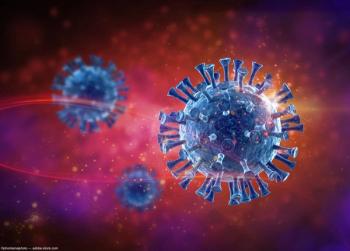
CDC notes that surface COVID-19 transmission is rare
In an update, the CDC noted that the chances of an individual contracting COVID-19 from surface transmission is low.
In a recent update, the CDC indicated that the danger of contracting COVID-19 from surface transmission is low, and the primary mode of infection is through exposure to respiratory droplets carrying the virus.
According to the CDC update, the risk of surface, or fomite, transmission of the disease is low compared with direct contact, droplet transmission, or airborne transmission.
Quantitative microbial risk assessment studies have suggested that the risk of fomite transmission of COVID-19 is generally low with a less than one in 10,000 chance that contact with a contaminated surface would cause an infection.
Various studies have shown that COVID-19 can survive for minutes to hours on porous surfaces and for days to weeks on non-porous surfaces. Under typical indoor environmental conditions a 99 percent reduction in infectious COVID-19 and other coronaviruses within three days, the update says.
The risk of fomite-mediated transmission is dependent on:
- The infection prevalence rate in the community
- The amount of virus infected people expel (which can be substantially reduced by wearing masks)
- The deposition of expelled virus particles onto surfaces (fomites), which is affected by air flow and ventilation
- The interaction with environmental factors (e.g., heat and evaporation) causing damage to virus particles while airborne and on fomites
- The time between when a surface becomes contaminated and when a person touches the surface
- The efficiency of transference of virus particles from fomite surfaces to hands and from hands to mucous membranes on the face (nose, mouth, eyes)
- The dose of virus needed to cause infection through the mucous membrane route
Moreover, cleaning and disinfection can reduce the risk of infection through surface transfer, but efficacy varies on the type of product. While no studies have looked at the effectiveness of cleaning surfaces on reducing concentrations of COVID-19, studies on cleaning other microbes showed a 90 to 99.9 percent reduction depending on the method and the surface being cleaned, according to the update.
Conclusion
The CDC noted in the statement that people can be infected with the virus through contact with surfaces. However, based on available epidemiological data and studies of environmental transmission factors, surface transmission is not the main route by which the virus spreads, and the risk is considered to be low.
In most situations, cleaning surfaces using soap or detergent, and not disinfecting, is enough to reduce risk.
According to the CDC, disinfection is recommended in indoor community settings where there has been a suspected or confirmed case of COVID-19 within the last 24 hours. The risk of fomite transmission can be reduced by wearing masks consistently and correctly, practicing hand hygiene, cleaning, and taking other measures to maintain healthy facilities.
Newsletter
Don’t miss out—get Ophthalmology Times updates on the latest clinical advancements and expert interviews, straight to your inbox.





